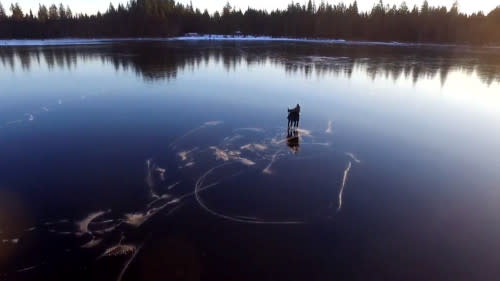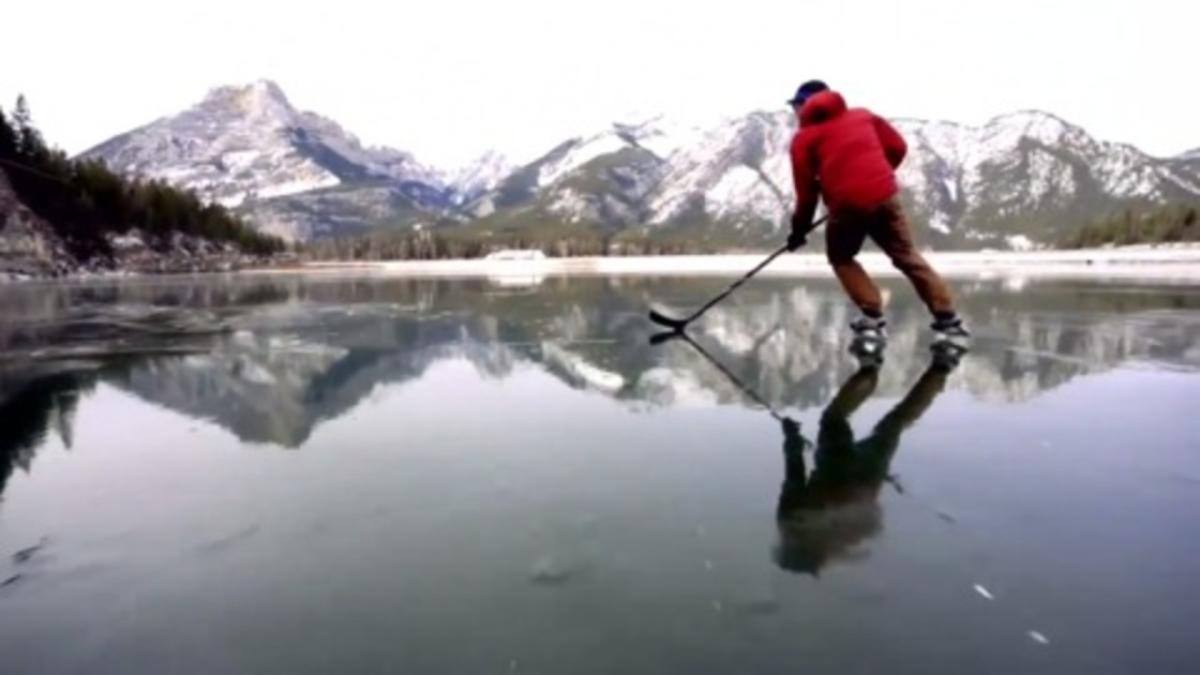Each winter, there are a number of stories in the news about people being rescued after falling through thin ice. To avoid these unfortunate accidents, exactly how can we tell if ice is safe to go out on?
After a particularly cold spell of weather, lakes and ponds can freeze over rapidly, and the ice will grow thicker the longer the temperature remains below freezing.
Sources such as the Canadian Red Cross say that for ice to be considered safe to go out on, it should be of a particular thickness — at least 15 centimetres thick for a person to walk or skate on it, or 20 cm thick for a group of people, and at least 25 cm thick for snowmobiling.
These thicknesses refer to the strongest and densest form of ice, however, so how can we be sure?
WATCH | If you or your dog falls through ice, here’s what to do:
RELATED: Steps to follow to ensure your survival after a fall through the ice
We can do a few things to tell the thickness of the ice on any body of water.
We can cut or drill down into the ice to take direct measurements. This is definitely the fastest way and the one that involves the least amount of guessing. There’s one problem, though: you actually need to walk out onto the ice to do this. So, you could immediately be putting yourself in danger if the ice isn’t thick enough to support your weight.
We can do a lot of physics and mathematics to determine the exact freezing rate of that particular body of water and exactly how long the water has been exposed to below freezing temperatures, and the effects of wind-chill. This process is quite complicated, however. It can easily vary from body of water to body of water, depending on the area of the exposed water surface, the depth of the water, the presence of moving water or currents, and the exact contents of the water, such as sediments, salt, chemicals, etc.
There is one easy way to get a reasonable estimate of the ice thickness, which can be performed safely from the shoreline, without needing to get out a calculator. We can look at the ice colour.
WATCH | ‘Safe today and not safe tomorrow’: What you need to know about ice
RELATED: Here’s what to do if your pet falls into icy water
The strongest and safest colour of ice is either blue or black. This is the ice that forms as the surface of the lake or pond directly freezes in cold weather. As a result, it is very dense. This is where the ice thicknesses mentioned by the Canadian Red Cross come in. Blue ice must be at least 15 cm thick to be safe to walk on. If a group of people are venturing out onto it, 20 cm thick is safe. At least 25 cm thick is best for snowmobiling, and it should be even thicker for bigger vehicles — 30 cm or more for cars and light trucks, and 40-50 cm thick for anything larger.

This is what a frozen lake or pond should look like if you plan on skating on it. The dark blue ice is dense, strong, and the safest ice to venture out onto.
If the ice is opaque white, it can appear safe, but that is not necessarily the case.
White ice or ‘snow ice’ is white because it forms when a layer of wet snow freezes on top of blue ice that has already formed. Snow layers contain a lot of air, which end up as air bubbles trapped in the ice structure. While it can be reasonably thick, the presence of these air bubbles weakens the ice, so it may not be safe to walk on. It is still the thickness of the blue ice underneath that determines, ultimately, whether it is safe to stand on.
Be extremely cautious about venturing out onto white ice. This is especially true if there have been recent swings between warm and cold weather or if there is moving water under the ice. Also, if there is a layer of fresh snow atop the ice, the snow may be concealing thin ice underneath. Snow on top of ice also acts as insulation, trapping heat that will prevent the blue ice from growing thicker.
White ice can be safe if the base layer of blue ice is thick enough. However, if you do not have a way of drilling down to see exactly how thick that blue ice is, it is probably best to avoid being out on it.


The hole in this ice is quite apparent, but the shades of grey surrounding it are a sure sign of how thin the ice is here.
Most importantly: If the ice is grey or greyish, do not step out onto it. If the ice is any shade of grey, it is likely decaying or melting, and it is probably fairly thin and weak. The source of the grey colour is typically the dark liquid water underneath showing through the ice. Even if it is very light or pale grey, it is best to err on the side of caution.
So, if the ice is grey, stay away!

